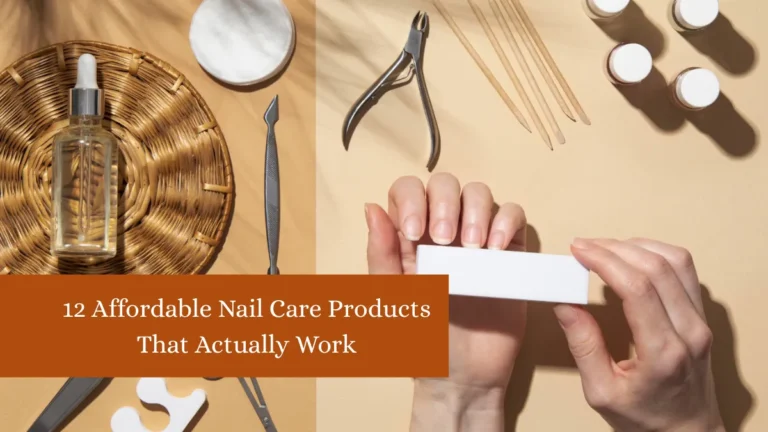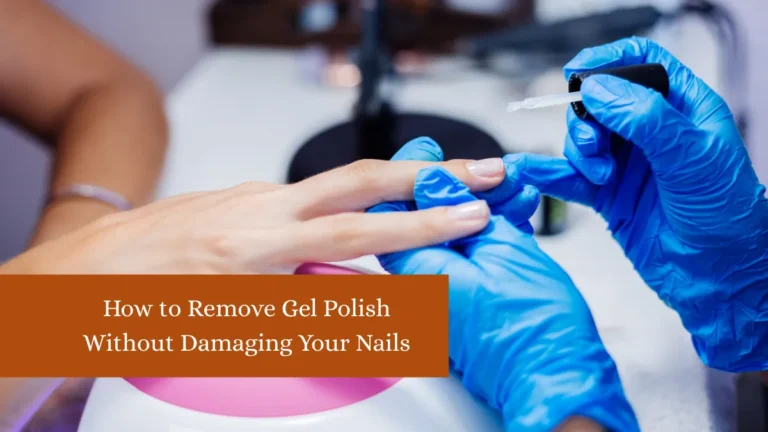A fresh manicure can make you feel instantly polished and put together, but common nail care mistakes can quickly turn your glossy, picture-perfect nails into a chipped, dull mess. Many of these mistakes are so subtle that you may not even realize you’re making them—like skipping base coat, over-filing, or soaking nails for too long before painting. While nail polish quality plays a role, the longevity of your manicure depends far more on how you prep, protect, and maintain your nails.
The good news? With a few small adjustments, you can dramatically improve the look and life of your manicures. In this guide, we’ll break down the most common nail care mistakes that ruin manicures, explain why they happen, and share practical tips to fix them. Whether you do your nails at home or in a salon, avoiding these pitfalls will help you achieve stronger nails and longer-lasting color every time.
1. Skipping the Base Coat
One of the biggest mistakes people make is skipping the base coat, often in an effort to save time. While it may seem unnecessary, the base coat is a crucial step in any manicure. It acts as a protective barrier between your natural nail and the polish, preventing staining from dark colors and improving polish adhesion. Without a base coat, nail polish is more likely to peel or chip within a day or two. Many base coats also contain strengthening ingredients like keratin, calcium, or vitamin E, which help maintain nail health over time.
Some formulas fill ridges, creating a smoother surface for polish application, which not only looks better but also prevents early lifting. A base coat can also help lock in moisture, preventing nails from becoming brittle. If you regularly notice your manicures chipping prematurely, applying a quality base coat is a simple, affordable fix that can extend wear by several days and protect your nails in the process.
2. Over-Filing Nails
Filing your nails is essential for shaping and preventing snags, but over-filing can cause serious damage. Using a coarse-grit file or filing too aggressively weakens the nail edge, making it prone to splitting and peeling. Filing in a back-and-forth sawing motion is particularly harmful because it frays the nail layers instead of sealing them. The correct way is to file in one direction with a fine-grit file (180 grit or higher), starting from the side and moving toward the center.
Over-filing also makes nails thinner over time, which can lead to breakage even under normal daily activities. For those who prefer frequent reshaping, it’s better to trim nails with clippers and then lightly file for smoothness. Keeping nails slightly longer and filing less frequently can help preserve strength. If your nails already feel weak or paper-thin, give them a break from filing, use a strengthening treatment, and keep them moisturized to encourage recovery.
3. Soaking Nails Before Applying Polish
Soaking nails in water before a manicure is a traditional practice in many salons, but it can actually shorten the life of your polish. When nails absorb water, they expand slightly. As they dry and contract, the polish applied on top can crack or lift because it no longer fits the nail’s changed shape. This is why water-based pre-manicure soaks often result in chipping within a day or two. Instead, experts recommend a “dry manicure” approach—cleaning and prepping nails without prolonged soaking.
You can still soften cuticles with oil or lotion, then gently push them back without water. If you do want to soak for relaxation or hygiene, keep it under one minute and thoroughly dry nails before applying polish. This one change can significantly improve polish adhesion and help manicures last longer. Many professional nail techs have abandoned soaking altogether for this reason, favoring dry prep techniques for durability.
4. Using Old or Thickened Nail Polish
Old, thickened polish can sabotage even the most carefully prepared manicure. Over time, exposure to air causes nail polish to thicken, making it harder to apply evenly. Thick polish tends to clump, streak, and take longer to dry, which increases the risk of smudging. It also fails to bond as smoothly to the nail, leading to premature chipping. If your polish has changed in texture, you can revive it by adding a few drops of nail polish thinner (never acetone, which can ruin the formula) and shaking gently.
However, if the polish is over two years old, separated beyond repair, or smells unusual, it’s best to replace it. Proper storage also matters—keep bottles tightly closed, away from heat and direct sunlight. Rotating your polish collection and using your favorites regularly ensures you’re always working with fresh formulas that deliver a flawless finish and better staying power.
5. Neglecting Cuticle Care
Cuticles protect the nail matrix (where new nail growth begins) from bacteria and damage. Ignoring them—or worse, cutting them aggressively—can lead to infection, hangnails, and uneven nail growth. Dry, overgrown cuticles also create a bumpy surface at the nail base, which can cause polish to lift prematurely. The healthiest way to manage cuticles is to soften them with cuticle oil or cream, then gently push them back with a wooden or rubber-tipped pusher.
Avoid cutting cuticles unless there’s a visible hangnail, and even then, trim only the dead skin. Consistent moisturizing keeps cuticles supple, reduces peeling, and makes the nail bed look smoother, which improves the overall look of your manicure. Incorporating daily cuticle care into your routine—just like hand lotion—can dramatically improve both nail health and polish longevity. Healthy cuticles are a small detail that make a big difference in the final manicure result.
6. Applying Thick Polish Layers
It’s tempting to load the brush with polish for quick coverage, but thick layers take much longer to dry and are more prone to smudging, bubbling, or peeling. Nail polish is designed to dry in thin, even coats, with each layer bonding to the next. When you apply a thick coat, the surface may feel dry while the layers underneath are still soft, leading to dents and early chipping.
The ideal method is to apply two to three thin coats, letting each one dry fully before adding the next. This not only ensures a smoother finish but also helps the manicure last longer. If your polish is highly pigmented, one or two thin coats may be enough. Patience during application is key—rushing through thick coats almost always results in a less durable manicure.
7. Skipping the Top Coat
Just as the base coat is essential for adhesion, the top coat is crucial for protection. It seals in color, adds shine, and creates a barrier against chips and scratches. Without a top coat, even the best polish formula will start to dull and wear at the edges within days. A good top coat should be reapplied every two to three days to maintain its protective layer and prolong wear.
There are different types of top coats—fast-dry, gel-effect, and matte—so you can choose based on your desired finish. Skipping this step not only reduces the manicure’s longevity but also its appearance. For best results, seal the edges of your nails with the top coat as well, which helps prevent tip wear. Think of it as the “armor” your manicure needs to survive everyday activities.
8. Ignoring Nail Health Between Manicures
One of the most overlooked causes of a ruined manicure is poor nail health between polish applications. Constantly wearing polish without giving your nails a break can cause discoloration, dryness, and brittleness. Just like skin and hair, nails need hydration and nourishment. Regularly moisturizing with cuticle oil, applying strengthening treatments, and eating a nutrient-rich diet supports nail growth and resilience.
If you notice peeling or persistent breakage, take a week off from polish to let your nails recover. This “nail holiday” allows you to treat them with oils, creams, and protective products. Strong, healthy nails hold polish better, making manicures last longer and look more professional. Prevention is always better than repair—investing in nail health pays off with every future manicure.
Bottom Line
The longevity and beauty of your manicure depend on more than just polish brand or skill—it’s about how you care for your nails before, during, and after application. Skipping base or top coats, over-filing, soaking nails too long, and using old polish are all avoidable mistakes. By improving your prep, application technique, and nail health maintenance, you can dramatically extend the life of your manicures. Avoiding these eight common errors means less chipping, better color payoff, and healthier nails overall—so your manicure looks as good on day seven as it did on day one.
FAQs
1. How long should a manicure last with proper care?
Usually 5–7 days for regular polish, up to 2 weeks for gel.
2. Can I skip the base coat if I’m using light polish?
It’s still recommended to protect nails and improve adhesion.
3. How often should I moisturize cuticles?
Daily, preferably twice a day for best results.
4. Is it bad to always have polish on?
Yes, nails need occasional breaks to prevent dryness and discoloration.
5. How can I make polish dry faster?
Use thin coats, a quick-dry top coat, or a drying spray.
✨ You May Also Like ✨







